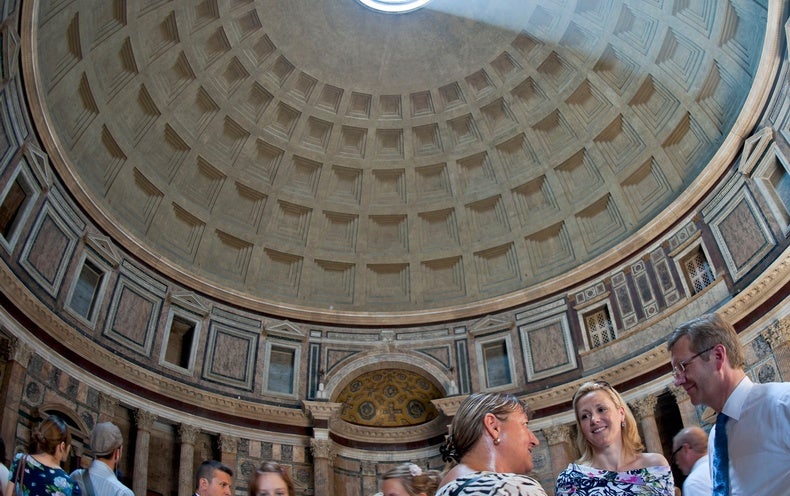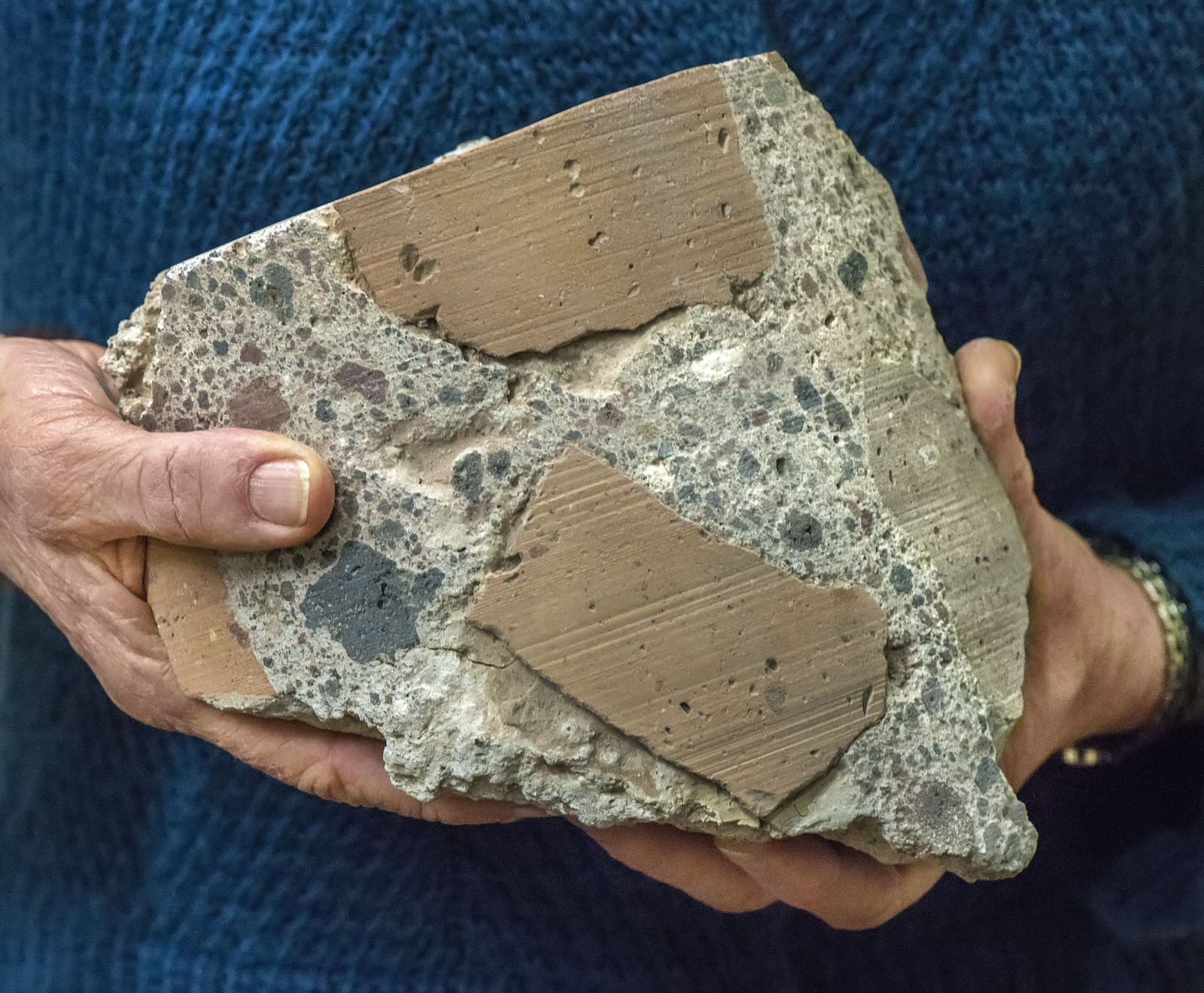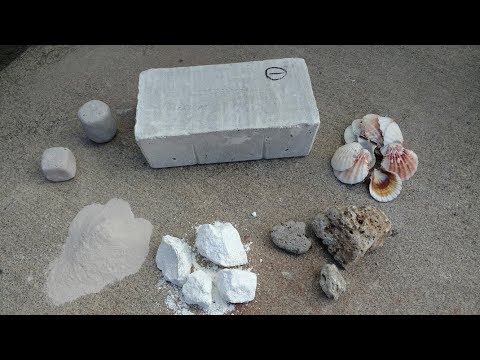For construction enthusiasts and history buffs, understanding the secrets behind Roman concrete can offer a fascinating glimpse into ancient engineering techniques that are still relevant today. The Roman Empire’s centuries-old concrete is known for its exceptional durability and strength, making it a popular choice for modern construction projects.
Overview of Roman concrete and its historical significance
Roman concrete, also known as opus caementicium, was a revolutionary building material developed by the ancient Romans around 300 BC. It consisted of a mix of volcanic ash, lime, and aggregate, often incorporating materials like crushed pottery, volcanic rock, or brick fragments. This unique blend resulted in concrete that could withstand the test of time, even in harsh aquatic environments.
The use of Roman concrete throughout the empire played a crucial role in the construction of monumental structures such as the Colosseum and the Pantheon. Its superiority over other building materials of that era made it a widely adopted technique, with many structures still standing strong today.
Advantages of using Roman concrete in modern construction projects
In the present day, the incorporation of Roman concrete techniques in modern construction can offer several advantages:
- Durability: The long-lasting nature of Roman concrete makes it ideal for structures that require strength and resilience over time.
- Sustainability: The use of natural and locally available materials, such as volcanic ash and recycled aggregates, reduces the environmental impact of construction.
- Resistance to seawater: Roman concrete’s ability to resist the corrosive effects of seawater makes it well-suited for coastal and marine construction projects.
- Cost-effectiveness: By utilizing locally available materials and techniques, the cost of construction can be reduced while still maintaining high-quality results.
By understanding the historical significance and advantages of Roman concrete, modern builders can draw inspiration from ancient engineering to create structures that stand the test of time.

Understanding Roman Concrete Composition
Roman concrete is a remarkable construction material that has stood the test of time, with some ancient structures still intact over 2,000 years later. But what makes Roman concrete so durable? Let’s dive into its composition.
Ingredients and ratios of Roman concrete
Roman concrete consisted of a mixture of volcanic ash, lime, and aggregates. The aggregates were typically made up of rubble, stones, or even broken bricks. The ratios of these ingredients were carefully measured to achieve the desired strength and durability. The specific ratios varied depending on the purpose of the structure and the available materials.
Role of volcanic ash and pozzolanic material in enhancing durability
One of the key factors that contributed to the strength and durability of Roman concrete was the use of volcanic ash and other pozzolanic materials. When volcanic ash is combined with lime, a chemical reaction occurs, creating a substance known as calcium silicate hydrate. This reaction not only strengthens the concrete but also creates a solid and impermeable matrix that increases resistance to weathering and erosion.
The use of pozzolanic materials allowed the Romans to build structures that were not only strong but also highly resistant to the corrosive effects of seawater. This innovation played a crucial role in the construction of their magnificent harbors, bridges, and aqueducts.
By understanding the composition of Roman concrete and the role of volcanic ash and pozzolanic materials, modern engineers can draw inspiration from ancient techniques to create sustainable and long-lasting structures.

Preparation and Mixing Process
Step-by-step guide to preparing Roman concrete mixture
To create a strong and durable Roman concrete, it is crucial to follow the proper mixing process. Here’s a step-by-step guide to help you get started:
- Gather your materials: You will need limestone, volcanic ash, water, and any additional aggregates or additives you wish to include.
- Measure the ingredients: Follow the correct ratio of 1 part lime, 2 parts volcanic ash, and 3 parts aggregate. Adjust the quantities based on the size of your project.
- Mix the dry ingredients: Combine the lime, volcanic ash, and aggregate thoroughly until they are evenly distributed.
- Add water gradually: Slowly add water to the dry mixture while continuously mixing. Aim for a consistency similar to pancake batter.
- Continue mixing: Use a hoe or shovel to blend the mixture for at least 10 minutes. This ensures that all the ingredients are well-incorporated.
- Let the mixture rest: Allow the mixture to rest for about 30 minutes, allowing the chemical reactions to take place and the mixture to thicken.
- Use or pour the concrete: Once the mixture becomes workable, you can use it for construction or pour it into molds.
Importance of proper mixing for optimal strength and consistency
Proper mixing is essential to achieve optimal strength and consistency in Roman concrete. Through thorough mixing, the ingredients are evenly distributed, ensuring that all the components contribute to the overall strength of the concrete. This consistency is crucial to create durable and long-lasting structures, just like those built by the ancient Romans. The chemical reactions that occur during the mixing process also play a significant role in enhancing the concrete’s strength over time. So, take your time and follow the correct mixing techniques to ensure the best results when working with Roman concrete.

Pouring and Curing Techniques
Roman concrete, also known as opus caementicium, is a highly durable and long-lasting building material that has been used for centuries. To achieve the desired strength and durability, it is important to follow proper pouring and curing techniques.
Best practices for pouring Roman concrete
- Mixing: Ensure that the mixture of lime, volcanic ash, and aggregates is well-blended to achieve a consistent texture and strength.
- Water content: Control the water content carefully to maintain the proper ratio. Too much water can weaken the concrete, while too little can make it difficult to work with.
- Formwork: Use sturdy formwork to shape the concrete and prevent leakage. Properly align the formwork to ensure uniform thickness and avoid potential weak points.
Factors affecting the curing process and tips for achieving maximum strength
- Temperature: Roman concrete cures best in warm and humid conditions. Maintain a consistent temperature during the curing process to achieve optimal strength.
- Moisture: Keep the concrete moist by spraying it with water or covering it with damp cloths. This helps prevent the evaporation of water, allowing the concrete to cure slowly and gain strength over time.
- Curing time: Roman concrete requires an extended curing period of at least 28 days. During this time, protect the concrete from excessive heat, cold, or rapid drying to ensure proper strength development.
Remember, following these pouring and curing techniques is crucial to achieve the full potential of Roman concrete’s strength and durability. With proper care, your Roman concrete structures can stand the test of time.

Roman Concrete Applications
Roman concrete, also known as opus caementicium, was a revolutionary construction material developed by the ancient Romans. It was widely used in various architectural structures, some of which still stand strong today. If you’re interested in learning more about Roman concrete and its applications, read on!
Examples of structures built with Roman concrete
- Pantheon: This iconic domed structure in Rome is a remarkable example of Roman concrete’s durability. It has a concrete dome that has withstood the test of time for over 2,000 years.
- Aqueducts: The Romans used concrete to construct extensive aqueduct systems to transport water. The Pont du Gard in France and the Aqueduct of Segovia in Spain are some notable examples.
Benefits of using Roman concrete in architectural designs
- Strength and Durability: Roman concrete is incredibly strong and can withstand harsh environmental conditions. Its longevity can be attributed to the use of volcanic ash as a pozzolan, which increases its strength over time.
- Flexibility in Design: Roman concrete allowed for the construction of complex architectural elements such as vaults, domes, and arches. Its plasticity when wet enabled the Romans to create unique structures.
- Sustainability: The production of Roman concrete had a lower environmental impact compared to modern cement. Its composition included natural materials that were readily available, making it a more sustainable choice.
In conclusion, Roman concrete has left a lasting legacy in the world of architecture. Its strength, flexibility, and sustainability make it a fascinating material to study and admire.

Modern Adaptations and Innovations
When it comes to construction materials, Roman concrete has stood the test of time. The ancient Romans perfected this durable and long-lasting material, and its principles are still applied in contemporary construction. Here are some modern adaptations and innovations that have incorporated Roman concrete techniques.
Incorporating Roman concrete techniques into contemporary construction
- Using volcanic ash: One of the key ingredients in Roman concrete is volcanic ash, known as pozzolana. Modern builders have experimented with incorporating volcanic ash into concrete mixes to enhance its strength and durability.
- Applying underwater construction: Roman concrete’s unique ability to harden even when submerged in water has been studied and applied in modern underwater construction projects, such as marine structures and artificial reefs.
Advancements in the use of alternative pozzolanic materials
- Fly ash: In addition to volcanic ash, modern concrete mixes often incorporate fly ash, a byproduct of coal combustion. This alternative pozzolan has similar properties to volcanic ash and can enhance the durability and sustainability of concrete.
- Silica fume: Another innovative pozzolan is silica fume, a byproduct of silicon and ferrosilicon production. When incorporated into concrete, silica fume improves its strength, durability, and resistance to chemical attacks.
By incorporating Roman concrete techniques and exploring advancements in alternative pozzolanic materials, modern constructions can benefit from the durability and longevity that made Roman concrete famous. These adaptations not only improve the quality of construction projects but also contribute to sustainable and environmentally friendly practices.

Maintenance and Longevity
Tips for preserving and maintaining Roman concrete structures
When it comes to preserving and maintaining Roman concrete structures, there are a few key tips to keep in mind. First and foremost, regular inspections are essential. By identifying any potential issues early on, you can prevent further damage and address any repairs promptly. It’s also important to ensure that the structures are properly protected from harsh weather conditions, such as excessive rain or extreme temperatures. Regular cleaning using gentle methods can help remove dirt and grime without causing damage to the concrete. Additionally, applying a protective sealant can further enhance the durability and longevity of the structures.
Comparing the durability of Roman concrete to modern concrete
When comparing the durability of Roman concrete to modern concrete, it’s clear that the Romans were onto something remarkable. Thanks to the unique composition of volcanic ash and lime, Roman concrete structures have withstood the test of time for centuries. The cohesive nature of the material allows it to self-heal, preventing cracks and degradation. In contrast, modern concrete often requires regular maintenance and may show signs of wear and tear much sooner. By adopting some of the principles and techniques used in Roman concrete, modern engineers and architects can strive to create more durable and long-lasting structures.

Conclusion
In conclusion, making Roman concrete can be a valuable technique to incorporate in present-day construction projects. Not only does it provide a strong and durable material, but it also offers several benefits that modern concrete may not possess.
Summary of the benefits and techniques of making Roman concrete
The key benefits of Roman concrete include its exceptional longevity, resistance to seawater, and ability to self-heal. The unique technique of incorporating volcanic ash, lime, and aggregates resulted in a cohesive and durable structure that has withstood the test of time.
Inspiring the use of this ancient material in present-day construction projects
By exploring and understanding the techniques used in Roman concrete, architects and engineers today can draw inspiration from this ancient material. The use of Roman concrete in modern construction projects can contribute to sustainable and long-lasting structures.
Overall, incorporating the knowledge and techniques of making Roman concrete can not only enhance the quality of construction but also pay homage to the ingenuity of ancient civilizations.
